The Chernobyl Exclusion Zone and Bikini Atoll are still devoid of humans. But without the threat of our presence, could wildlife thrive in a radioactive environment?

Early this year, the Doomsday Clock ticked forwards to two minutes to apocalypse – the closest it’s been since 1953 when the US and the Soviet Union tested hydrogen bombs. The Bulletin Of The Atomic Scientists opted to move the clock forwards due to growing concerns about potential nuclear war, whether such events be borne of strife between the US and North Korea, Pakistan and India, or some other crisis point.
In the past, we have seen the immediate effects of radiation, through nuclear bombs or power station failures. By visiting radioactive sites like these, enterprising scientists can find out about the long-term impact of radiation on the environment, so we know what to expect in the event that someone pushes the big red button.
GOING NUCLEAR
One place that might offer some clues is Bikini Atoll, a ring-shaped coral reef located in the Marshall Islands. In 1946, the US evacuated Bikini’s residents, then spent 12 years testing its nuclear firepower by detonating 23 nuclear bombs there, including one that packed 1,000 times the power of the one that devastated Hiroshima and was the largest nuclear device that the US ever exploded. It’s a place, you might think, that’d be completely devoid of life to this day.
But in 2016, Steve Palumbi, professor of marine sciences at Stanford University in California, visited Bikini to document the marine life. He first got interested in Bikini while researching his book The Extreme Life Of The Sea. He learned that the age of organisms could be determined by measuring their artificial carbon-14 levels caused by hydrogen bomb tests in the middle of the last century. So when he was invited by the US television station PBS to do a documentary series called The Big Pacific, he told the producers that he wanted to go to Bikini Atoll.
This story is from the {{IssueName}} edition of {{MagazineName}}.
Start your 7-day Magzter GOLD free trial to access thousands of curated premium stories, and 9,000+ magazines and newspapers.
Already a subscriber ? Sign In
This story is from the {{IssueName}} edition of {{MagazineName}}.
Start your 7-day Magzter GOLD free trial to access thousands of curated premium stories, and 9,000+ magazines and newspapers.
Already a subscriber? Sign In
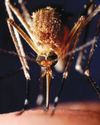
World's First Malaria Vaccine
The World Health Organization’s director-general hails ‘historic moment’ as mass immunisation of African children begins

Is River Pollution Putting The Species In Jeopardy Again?
Ten years ago, it was jubilantly announced that o ers had returned to every county in England. But is river pollution putting the species in jeopardy again?
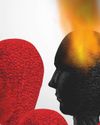
The Big Burnout
Long hours, low pay and a lack of appreciation — among other things — can make for a stressful workplace and lead to burnout. It’s something we should all be concerned about, because over half of the workforce reports feeling it
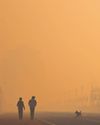
Putting Nature To Rights
More countries are enshrining the right to a clean environment into law. So if a company or government is impinging upon that right, you could take them to court

Mega Spaceship: Is It Possible For China To Build A Kilometre-Long Spacecraft?
Buoyed on by its successful Moon missions, China has launched a five-year study to investigate the possibility of building the biggest-ever spacecraft

Are We Getting Happier?
Enjoying more good days than bad? Feel like that bounce in your step’s getting bigger? HELEN RUSSELL looks into whether we’re all feeling more cheery…

“Unless the Japanese got the US off their backs in the Pacific, they believed they would face complete destruction”
Eighty years ago Japan’s surprise raid on Pearl Harbor forced the US offthe fence and into the Second World War. Ellie Cawthorne is making a new HistoryExtra podcast series about the attack, and she spoke to Christopher Harding about the long roots of Japan’s disastrous decision
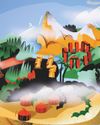
Your Mysterious Brain
Science has mapped the surface of Mars and translated the code for life. By comparison, we know next to nothing about what’s between our ears. Over the next few pages, we ask leading scientists to answer some of the most important questions about our brains…

Why Do We Fall In Love?
Is it companionship, procreation or something more? DR ANNA MACHIN reveals what makes us so willing to become targets for Cupid’s arrow
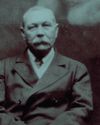
Detecting the dead
Following personal tragedy, the creator of that most rational of literary figures, Sherlock Holmes, developed an obsession with spiritualism. Fiona Snailham and Anna Maria Barry explore the supernatural interests of Sir Arthur Conan Doyle